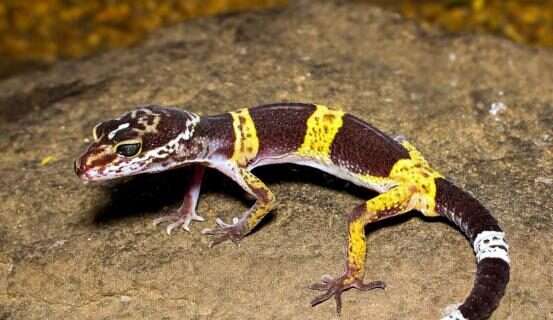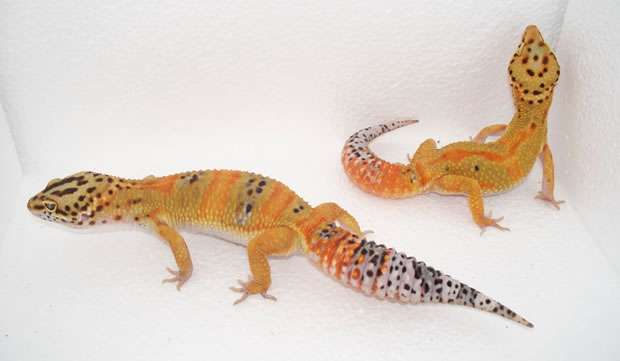
Description:
Scientific name: Eublepharis hardwickii
Life span: 10-20 years
Eublepharis hardwickii, usually referred to as Hardwicke’s gecko or the East Indian leopard gecko, is a species of gecko in the family Eublepharidae of lizards.
Rather short limbs, a robust body, and short fingers. The ear opening is broad, suboval, and vertical, and the snout is as long as the space between them. rostral sub-pentagonal, twice as broad as high, with median cleft above; 3 or 4 internasals; about 10 upper and as many lower labials; mental broadly pentagonal, in contact with two enlarged chin-shields, surrounded by irregular smaller ones gradually descending into the flat granules of the gular region. Head covered in irregular polygonal scales.
Native Region/Habitat
The species is unique to Bangladesh and India. Four E. hardwickii specimens are mentioned by Günther: one from Chittagong, two from Russelconda in the Madras Presidency, and a fourth that Captain R. H. Beddome obtained in the Anamalai Mountains.
Behavior:
East Indian Leopard Geckos might be shy, but they can also be approachable and tame with repeated interaction. When handling a gecko, one must always exercise extreme caution and never grab or restrain one by the tail.
Care As a pet/In captivity:

The typical enclosure conditions: We advise using an enclosure that measures at least 500x450x400 cm for an adult group. Not less than 0.2 m2 should make up the bottom area. We keep adults apart, save for the breeding season.
Substrate: Clay or sheets of paper.
Decoration: Shelters made of bamboo and stones, a moist room filled with moss or wet paper sheets, and a water dish.
Illumination: A full spectrum lamp is only required for children. Use fluorescent lighting for grownups. The average day lasts 12 hours, however during breeding season it might last up to 14 hours.
Temperature and heating: For this species, we don’t utilize spot lighting. The enclosures should be kept at a temperature of about 22–23°C at night and 25–26°C (but not more than 28°C!) during the day.
Humidity: 70-80% (spraying with warm water 3 times a day) (spraying with warm water 3 times a day).
Diet: Adult animals are given young mice, immobilized Shelfordella tartara, and crickets (4-6 per week, 3-4 per day) (one a week for gravid females and females after them making a clutch). Provide calcium three to four times per week along with crickets, and there is a dish at the enclosure with calcium powder and D3.
Table





